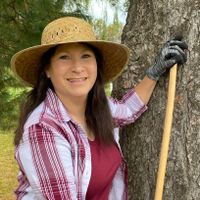Seed Bomb Sowing Time – When To Sow Seed Balls In The Landscape


Were you disappointed in the germination results when you planted seed balls? This novel approach for sowing seeds has been used to repopulate hard-to-plant areas with native species. The concept sounds promising, but gardeners are reporting low germination rates when using this method. The solution lies in choosing the correct planting time for seed balls.
When is the Seed Ball Season?
If you've never used seed balls, it's an interesting concept. Gardeners either purchase or make seed balls by stirring humus, clay and the desired seeds together. Small balls are formed by rolling the mixture between the hands. The seeds balls are then tossed into the landscape, which is why they are sometimes called seed bombs.
The seed ball protects the seeds from the hungry mouths of small animals and birds. Rain breaks down the clay and the humus provides necessary nutrients for the young seedlings. This sounds interesting, but there are a few snags to work out when using this method:
- Native species have a difficult time competing with established plants, especially invasive ones. Knowing how to plant seed bombs is the key to success.
- Seeds from native species of plants which grow in northern U.S. climates often require a cold period. The solution is to stratify seeds or plant at the correct seed bomb sowing time for the species.
- When dispersing seed balls, it's easy for them to land in the wrong microclimate for the species. Know the ideal environment for the species you are planting and strive to place the seed balls accordingly.
How to Plant Seed Bombs
To reduce competition and give native species the chance to germinate and grow, site preparation is often necessary. The area can be mowed and the soil tilled or worked up. On steep terrains or hard-to-reach sites, smaller areas can be weeded and worked by hand. Vegetative killer can be sprayed or a well-controlled burn can be used to clear the site.
Rather than tossing the seed bombs, place them throughout the area by hand. Allow adequate space for the mature size of the species. For optimal germination rates, push each seed ball halfway down in the ground.
When to Sow Seed Balls
Timing is an important aspect when planting seed bombs. If your germination success rate has been low, here are a few suggestions to try:
- The best seed bomb sowing time for most annuals is in the spring after danger of frost. Perennial plants, like milkweed, do best when planted in the fall so the seeds experience a period of cold.
- Avoid spreading seed balls during the heat of the afternoon. Try sowing in the evening or before a rain.
- To ensure the seed balls land and remain in the correct microclimate, don't plant during windy weather.
- Plant during a rainy season whenever possible; otherwise, supplemental watering will be necessary.
If you're seed bombing efforts haven't paid off in the past, hopefully these suggestions will help. In the meantime, keep up the good work in your efforts as a steward of the planet.
Sign up for the Gardening Know How newsletter today and receive a free copy of our e-book "How to Grow Delicious Tomatoes".

Laura Miller has been gardening all her life. Holding a degree in Biology, Nutrition, and Agriculture, Laura's area of expertise is vegetables, herbs, and all things edible. She lives in Ohio.